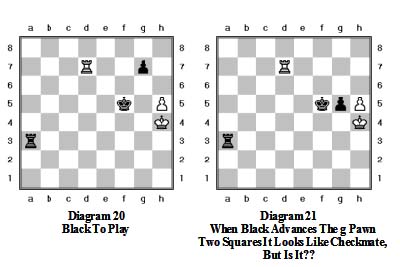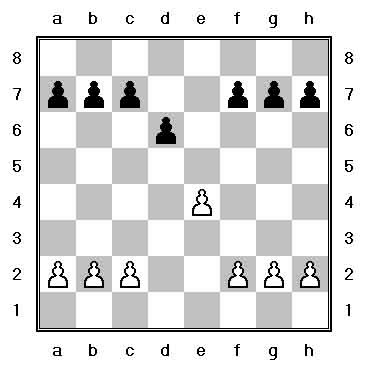

© 2009 Milton N. Bradley
Overview
The basic ideas of Chess are well known, and over the years many prominent Masters and Grandmasters have written books designed to teach beginners those rudiments. So it seems reasonable to ask why yet another exposition of this same material is either warranted or necessary.
The answer is simple. Learn Chess Fast is clearer, more logically organized, more complete, and, especially, more insightful than anything ever written, progressing smoothly and effortlessly from the most basic concepts to the more complex. The result is a unique, self-teaching primer that speeds learning while increasing the beginner's enjoyment and understanding. It can do this because it represents the culmination of the author's 50 + years of successful experience in teaching both Chess and Go beginners, from young juveniles thru older adults.
Throughout, key ideas are boldly highlighted in prominent text boxes and then profusely and clearly illustrated., so the things that most need the reader’s attention/learning are not only thoroughly and insightfully explained, but also clearly distinguished from supporting concepts.
The book’s many hundreds of diagrams and clear explanatory text better answer the key beginner’s issues that all Chess primers must address, and such things as its exposition of the reasons why memorization of the Openings is counterproductive will save the beginner from much unnecessary later trauma..
Two of the book’s most unique features are its explanations that:
- The “standard’ version of Chess that forms the book’s subject is really only the most prominent variant of an entire complex of similar but sometimes strikingly different games such as Chinese Chess, Korean Chess, Japanese Chess, and an entire complex of even more arcane and interesting variants known collectively as “Fairy Chesss”.
- The“special rules” governing such things as Castling, the “En Passant” pawn capture et al are really only the unavoidable residue of the game’s speedup in the Middle Ages!
The result is that what other beginner’s Chess books present as seemingly arbitrary and oft confusing facts to be memorized, here become logical constructs that are easily remembered!
As one of its reviewers said: "This is the book I wish I had when I was learning to play Chess". Check it out for yourself and discover why Learn Chess Fast is the ideal gift for your own family members, as well as for friends and relatives who've had difficulty in learning Chess in the past, or whom you've never before been able to interest.
IMPORTANT!
The selected brief excerpts From "Learn Chess Fast" are presented below without the formatting (like highlighted text boxes), which not only make the book's key ideas stand out, but also make all of the remainder of the text easier to follow and digest. So although this excerpted content is identical to that of the book, it's important to realize that what you see here is only a pale shadow of the much more elegant original, and therefore provides just a tiny inkling of the book's incisive and elegant presentation and many insights.
© 2009 Milton N. Bradley
From Chapter 4
The En Passant (French: “In Passing”) Capture
This complicated rule was introduced in the Middle Ages as part of the Chess speedup which occurred then, when each Pawn was allowed to advance 2 squares on its first move instead of only one.
But this new 2 square Pawn move meant that an opposing Pawn could no longer capture as was formerly possible when Pawns could advance only one square. And, just as with Castling, players accustomed to the old move protested, so the new en passant rule was added to solve the problem.
- When a Pawn is moved 2 squares on its first move, and
- It passes an opposing pawn in the next file on its fifth rank, then
- Capture by the opposing Pawn is allowed en passant (e.p.) as though the Pawn had only been moved 1 square, but only on the very next move.
- If that capture is not made, the opportunity to capture that Pawn en passant is gone forever.
That an En Passant capture could be made only on the very next move was a compromise introduced to satisfy those who objected to allowing it at all! It also prevents disputes because one player may not remember exactly what happened several moves earlier.

Dia.20 White’s King has no moves, so...
Dia.21 Black’s 1....g5 advances his Pawn 2 squares with check! And it looks like checkmate! But......

Dia.22 White’s 2.hg e.p. captures, and the threat is over!
Dia.23 Black then will play 2..... Kg6 to capture the White “passed Pawn”, and now the game will be a “book” draw because it’s King + Rook vs. King + Rook.
The following is the introductory section to Chapter 6.
The Fundamental Ideas Of Chess
Our emphasis here will be on those ideas of most use to beginners in creating a rationally structured game. Of necessity, our primary focus will be on the essentially straightforward Opening and the elementary aspects of the Endgame, for the most part leaving the enormous tactical complexities of the Middle Game and the more advanced aspects of the Endgame for your later independent study.
In a very real sense, the dichotomy between “Operational” and “General” concepts presented here is arbitrary. The basic idea is to place those concepts that apply primarily to specific situations into the Operational category, and to put those with more diffuse application throughout the game into the General Concepts category.
Although logically second, because of their overwhelming importance in helping the beginner achieve an understanding of how to play, especially in the game’s vital Opening, the Operational Concepts are presented first.
Part 1 - Operational Concepts
- Mobility
Chess Is A Game Of Mobility
Although Chess is far too complex to be adequately characterized by any single idea, in the final analysis it is the relative mobility of the opposing side’s forces that, more than anything else, ultimately determines the game’s winner.
The presence of the Pawns and their structure significantly impacts mobility, so even if both side’s numbers are equal, the player whose pawn structure allows his pieces to move about more freely has a very real advantage!
Caution!
Mobility Is A Transitory Phenomenon That Must Ultimately Be Transformed Into Either A Material Advantage Or A Mating Attack To Produce A Win
The following excerpt is from the introduction to Chapter 11
“Knowledge Keeps Like Fish” - George Bernard Shaw
This colorful and insightful maxim is especially relevant and true in Chess, and is expressed in the following precept::
Memorization Of The Chess Openings Without Real Understanding Is An Invitation To Disaster!
Although many centuries old, Chess remains dynamic and ever evolving, so that what was long established “book” only yesterday may today be an obsolete error!
Then, a bit later in Chapter 11
What The Chess Opening Is All About.
Selection Of A Chess Opening Is Actually A Decision To Pursue A Particular Strategy
The major purpose of the Opening is to structure the way that the player desires the game to be played, and the major opening systems differ primarily in how they handle development and control of the center of the board.
The most obvious approach is to immediately attempt to seize control of the center. And there is its opposite in which the center is quickly locked, and then both players mainly maneuver behind their own Pawn lines for the early part of the game. Those are the “classical” opening systems. Even more interesting are the Hypermodern opening systems in which one player deliberately allows the opponent to establish center control, and then, at the appropriate later moment, tries to take it away!!
The Opening sets the stage for all that follows, so it is by far the most important part of a Chess game.
Each Opening system is based upon its own unique concept of the ideal balance between the critical elements of:
- mobility/ development
- space
- material
- Pawn structure
- King Safety
Finally, here's just a tiny bit of the main portion of Chapter 11.
King's Pawn Openings
- The Direct Approach To Development/Center Control
This is the “open game” invented by Paul Morphy, which revolutionized chess when he introduced it in the 1850's.
- Both sides immediately contest the center and try to develop as quickly and completely as possible.
- White's fundamental plan in this branch of the King's Pawn Openings is to advance his Queen Pawn to d4 at the proper moment to force the exchange of Black's King Pawn,
in order to leave White with the favorable Pawn structure shown here.

Dia.1 The key thing to remember is that White’s advantage here is only temporary!
At the moment, White’s better Pawn structure cramps Black and provides valuable outposts for White’s pieces at d5 and f5.
But later in the game, and especially in the endgame, neither of these things may have much meaning, and the White center Pawn may even become a weakness if it is subject to attack.
So an advantage like this must be quickly put to use via an appropriate attack if it is to pay off!
Examples of this genre are The Center Game, The Bishop's Opening, The Four Knight's Game, The Giuoco Piano, The Ruy Lopez, Petroff's Defense, The Two Knight's Defense, and The Vienna Game.
The foregoing snippets can only suggest how Learn Chess Fast's many insights can ease and speed the beginner's learning, but hopefully they will be sufficient to induce the reader to give it a look, whether for him/herself or for that friend or relative who always wanted to learn chess and never seemed to be able to.
Errata
Regrettably, a number of typos and other relatively minor errors escaped the proofreaders and have made their way into the first few copies of the published manuscript. If you have one of these copies, the errors are corrected below. All copies purchased after June 1, 2009 should be error free.
Learn Chess Fast is published by Ishi Press International and as of May 2, 2009 is available on Amazon, at Barnes & Noble, and other major on line book sellers!
Continue
Click Here To Return To NEW GO PROVERBS ILLUSTRATED
Click Here To Go To Improve Fast In Go
Click Here To Return To GO FOR KIDS
Click Here To Return To Milt's Go Page